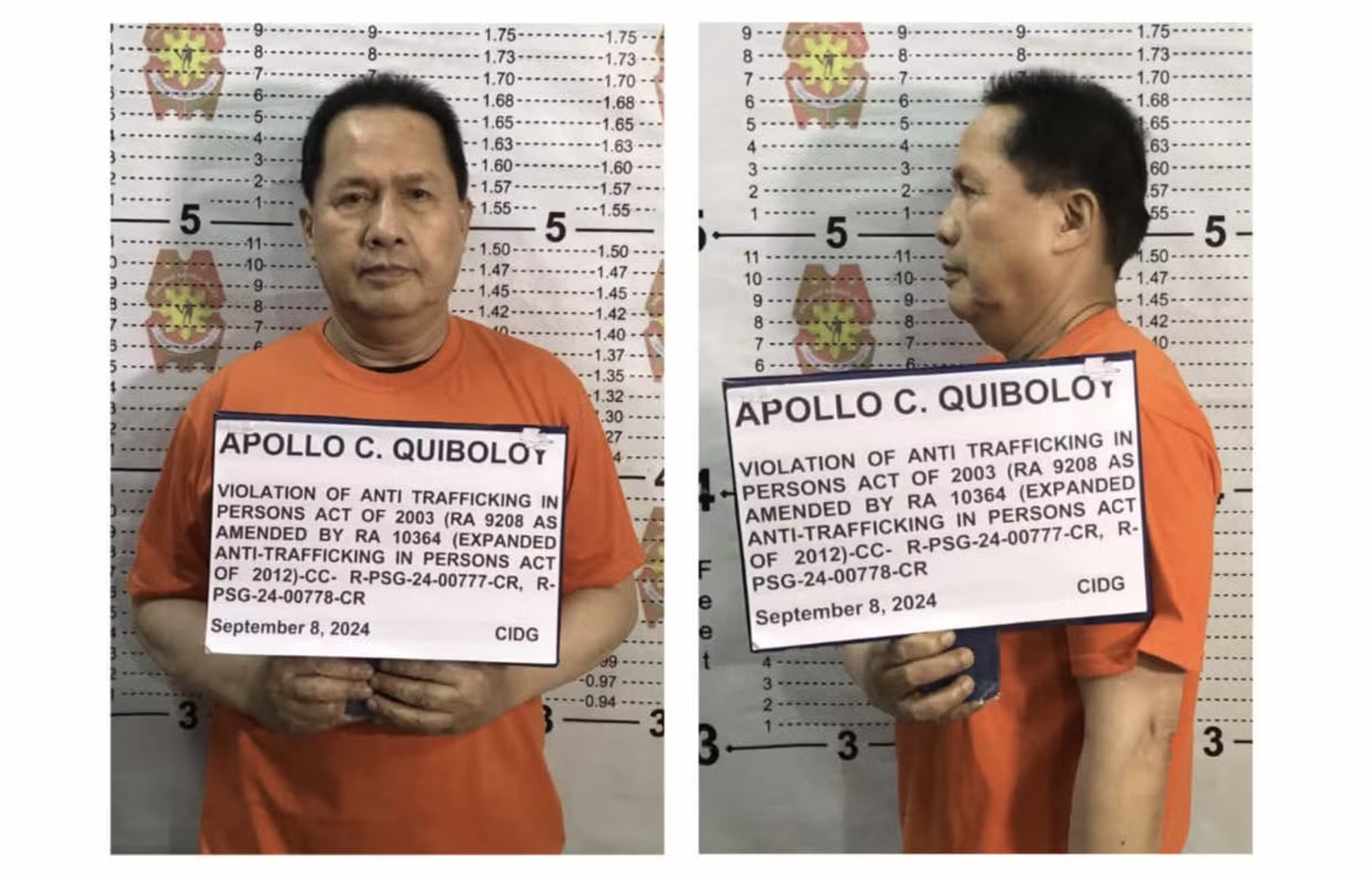On the night of September 1, 2009, one of the youngest and promising personalities of the new age Philippine cinema bid farewell when Alexis Tioseco, a 28-year-old Filipino-Canadian film critic, was killed in his house in Quezon City in a crime known as ‘burglary gone wrong.’ Nika Bohinc, Tioseco’s girlfriend, a Slovenian film-critic, writer, and editor, was also murdered.
This case remains unsolved and continues to seek justice for their ruthless death. Investigators are digging into the burglary angle based on the testimony of Magdalena Patpat, the couple’s housemaid for three years who was seen hogtied and gagged by the assailants who rummaged the house.
According to Patpat, at around 8 p.m., Criselda Dayag, a newly hired house helper a few months prior to the incident, let the three unknown men to enter the couple’s house situated in Times Street in Brgy. West Triangle, Quezon City. Earlier, Dayag reportedly told Patpat that she would buy some personal stuff at a nearby store and call her father in Cebu before the robbers came.
 Based on reports, at about 11 p.m., Tioseco and Bohinc arrived and were shot while entering their house. The gunmen fled aboard the couple’s Ford Lynx with Dayag, carting away some jewelry and a laptop.
Based on reports, at about 11 p.m., Tioseco and Bohinc arrived and were shot while entering their house. The gunmen fled aboard the couple’s Ford Lynx with Dayag, carting away some jewelry and a laptop.
Initially, the motive seemed a simple burglary gone wrong case and it was unfortunate that the couple came while the crime was underway. However, with Dayag’s suspicious movements of letting the gunmen in and fleeing with them afterwards bolstered this theory.
A week after, the police brought into custody a certain Danilo Jomoc, Sr. (not Jovoc as initially reported), a family driver. Witnesses claimed Jomoc has driven the couple’s Ford Lynx and abandoned it before the incident. The driver also matched the cartographic sketch of the witnesses.
Initial Suspect
Lead investigators PO2 Loreto Tigno and PO2 Joycelyn Marcelo had formally charged Jomoc as the suspect of robbery with murder, a non-bailable offense. Looking into the witnesses’ claims and the pieces of evidence, they believed they had a solid case.
However, the inquest fiscal ruled that further investigation was necessary and ordered the release of Jomoc. This was the decision made despite Tioseco’s family claims that Jomoc was with them on the night of the twin murders. The case is still under re-investigation as of press time and no warrant of arrest has yet been issued.
 Compounding the police investigation’s difficulty in pursuing the case is Patpat’s refusal to further cooperate. Without Patpat’s testimony, the police admitted it will be difficult to issue an arrest warrant to Jomoc. Patpat is the only reliable witness to the crime.
Compounding the police investigation’s difficulty in pursuing the case is Patpat’s refusal to further cooperate. Without Patpat’s testimony, the police admitted it will be difficult to issue an arrest warrant to Jomoc. Patpat is the only reliable witness to the crime.
Despite this setback, the Quezon City Police Department (QCPD) Central Investigation Detection Unit (CIDU) believes that Jomoc is the prime suspect. Insp. Rogelio Diaz, chief of operations of the QCPD-CIDU, said: “All pieces of evidence point to him. Once we complete our investigation, we will request an arrest warrant to be issued.”
Is this case already closed? Not yet, if you will ask Tioseco’s circle of friends, who believe there is more than meets the eye. For them, an appreciation of the young film critic’s passion for local cinema has the missing link.
Tioseco was an advocate and prime mover of local independent films. Upon his death, he was a film professor at the University of Asia and the Pacific and a contributing writer to many publications here and abroad, including The Philippines Free Press, a prestigious weekly news magazine, where he was supposed to start a regular column. He also appeared regularly in television as a film commentator, especially in ANC’s Media In Focus hosted by Cheche Lazaro. He had painstakingly worked to promote the local Indie films in mainstream media. He was hailed as the best Filipino film critic today, but ignored this accolade. However, not everyone in the industry agreed with his views.
Quark Henares, a film director and Tioseco’s close friend, says Alexis was very passionate about exploring the different facets of cinema and would challenge the status quo of anything to get his message across.
 “He was a very funny guy and always joking around,” Henares recalls. “Although he was young, he had good working relationship with many directors in the industry. But he also had brashness. He was vocal against the movie studios and complained about how stagnant the Philippine cinema had become.”
“He was a very funny guy and always joking around,” Henares recalls. “Although he was young, he had good working relationship with many directors in the industry. But he also had brashness. He was vocal against the movie studios and complained about how stagnant the Philippine cinema had become.”
A few years ago, Tioseco and his colleague Erwin Romulo drafted a position paper seeking reforms in the Metro Manila Film Festival. Some notable filmmakers, including Peque Gallaga, Jose Javier Reyes and Eddie Garcia, rallied behind them, but in the end their petition fell on deaf ears.
Stepping on Another’s Shoes
Issues like these, Henares feels, have ruffled the feathers of some of the industry’s bigwigs, and Tioseco could have stepped on some toes that did not appreciate a relatively newcomer’s moves.
“The murder case could have been plagued by those with a vendetta,” Henares says. He adds that Jomoc was a fall guy. He points out that the suspect has been a long-time employee of Tioseco’s father in their family business, which Alexis took over after his dad passed away in 2006. Alexis even sent Jomoc’s children to school, Henares stresses.
“There is no way Jomoc would do something like that,” Henares says. Gang Badoy, another close friend of Tioseco agrees: “Jomoc has been with the family for 16 years. He has nine children. When one of his children graduated from college, Alexis helped to hold a party. He was part of their family.”
Badoy, who has recently been a recipient of both the TOWNS and TOYM award for service to the nation, has also been teaching creative writing at the Bilibid Maximum Security jail for the past several years and has been a human rights advocate through RockEd, a non-government organization she founded.
She narrates that when the Tioseco family inquired about the identity of the witness who had identified Jomoc, they were told that was not allowed. She also finds it unusual that the police came with a suspect’s sketch after reviewing the records and photographs of all the employees of the Tioseco’s family.
The way the scene of the crime operatives handled the murder case was, in Badoy’s mind, sloppy. “They had only one stretcher to carry both bodies. They did not even have any body bags. First, they carried Nika’s body. Then you would see the flowing fresh blood from Nika’s wounds on the floor. The same thing in Alexis’ case. So there were blood trails everywhere.”
Badoy was the only person without a police badge who managed to sneak into the crime scene. She was barking orders around and others thought she was a prosecutor sent by the city hall. With the data she gathered in the crime scene, this was more than a robbery case. “Whoever did this has a motive of killing Tioseco. I cannot accept this was just an ordinary murder,” she says.
Badoy’s Observations
Badoy points out the time elapsed between the robbers barging in and the couple’s arrival. “If the killers came at 8 p.m., it showed that they were there for over two hours,” she says. “If your intention was to rob a house, you would move quickly to get everything and 30 minutes was already too long.”
“A professional akyat-bahay (robbery) gang would know the valuable household items to get. In this case, many valuable things like LCD TV in the living room were not taken.”
Brutal Killing
“The manner Tioseco was killed showed it was not a case of bumping into the robbers by surprise,” Badoy narrates. “The killers were sure where to shoot him. His first gunshot wound was right in the center of his solar plexus (abdomen area). His last was in the nape.”
Aside from the gunshot wounds, Badoy adds, Tioseco’s chest bore several bruises of a somewhat rectangular solid object where apparently he had been hit repeatedly. “It was almost as if they were hitting him on purpose before he was killed.
“When I saw all the wounds, I knew they were all set to kill him.” The QCPD-CIDU disagrees with all these observations. They were aware how emotional those close to the couple would be, but for them the evidence was clear.
“It was merely a speculation to have a large conspiracy angle,” says PO3 Ronaldo Naba. “As of today, Jomoc is the main suspect and no one else.”
When asked why Jomoc has not been arrested for almost a year after the crime, the CIDU admitted Patpat’s refusal to cooperate was delaying their efforts. Also, they could no longer track the whereabouts of Dayag, who Badoy admits is a key in solving the crime.
A resolution is nowhere near. The police have yet to arrest the person they believe is responsible for the crime, while the victims’ friends think they are going after the wrong guy.







